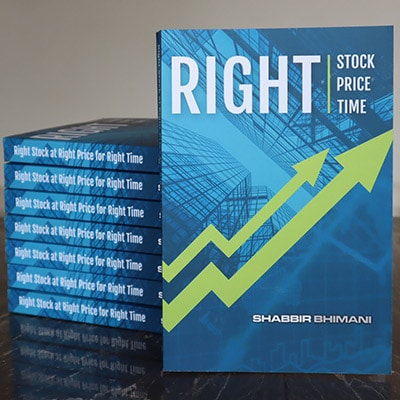A good stock market investor knows how to identify good stocks and the same time, he also knows how to manage to buy at a reasonable good time. They basically stand on the sidelines and wait for the right opportunity and then try to grab with both hands whenever the market crashes or undergoes a big correction.
A good stock market investor knows how to identify good stocks and the same time, he also knows how to manage to buy at a reasonable good time. They basically stand on the sidelines and wait for the right opportunity and then try to grab with both hands whenever the market crashes or undergoes a big correction. However, not all investors can be good at timing the market all the time. The best alternative is to view the market in a long term perspective and approach it in a disciplined manner. The most successful strategy that one should apply is to follow a disciplined approach to investing through an asset allocation and Tactical Asset Allocation.
In case of the “Tactical Asset Allocation model, the investor, with the advice of his consultant, moves his money out of one asset class into the other and then tries to time the markets in order to achieve better returns. This requires a good understanding of the market. But, if it is done right, the returns in this model can work much better than the passive models.
On the other hand, the “Strategic Asset Allocation” (SAA) model works with regard to the investors age, as well as his unfulfilled financial goals and suggest a bench mark allocation to different asset classes. For example: A 45 years old investor can invest 55% (100 minus 45) of his total assets in equity, while the balance can be invested in fixed-income assets, cash and bank deposits. A more conservative SAA would adopt, say 80 minus age to determine allocation to equities.
The decision of allocation, done towards equity on the basis of aggressive or conservative approach, should be considered as a benchmark. You will allow for some variation to happen, depending on the market, interest rates and other factors.
Understanding an over heated market situation
An investor can never be 100% sure of the best time to sell one’s stocks. However, one can book some profits when the market shows signs of running ahead of its fundamentals. It’s a good idea to sell under performing stocks in your portfolio and perhaps even sell part of your holdings of stocks that are doing well, to reduce the equity exposure by about 5%. If you come across stock prices falling after you have just bought, you can also be familiar with a scenario, whereby prices may rise after you sell. Anything is possible vice versa. You have to be cautious when the market gets over heated.
One can know when the market is overheated through certain signs which are as follows:
- When P/E ( Price –to- Earning ) ratios hit the roof, it acts as an indicator of a heated market situation.
- The second sign of an heated Market situation is when companies ( P/E’S) are much higher than the actual growth rates.
- Thirdly, when analysts start discounting projected earnings of companies two or three years forward, it is time to become cautious.
- Fourthly, a large number of companies hit all time highs of new highs reported by business newspapers run o many columns.
- Finally, one can know that the market is over heated when “Penny Stocks” and stocks of loss making companies hit the upper circuit on the stock exchanges on repeat basis.
Senior Citizens and investors whose incomes are below the taxable limit may opt for Bank Fixed Deposits. However, if an investor finds his current equity allocation to be lower than what is suggestible, then even by following the “Conservative Asset Allocation approach, in an over heated market, it would be good enough to increase equity exposure to the desired level, because equities are the best bet against inflation. An investor can experience true success in investing, not by timing the market or timing your investment decisions, but you can achieve success in investment by following a disciplined approach without getting carried away, on emotional grounds.



Leave a Reply